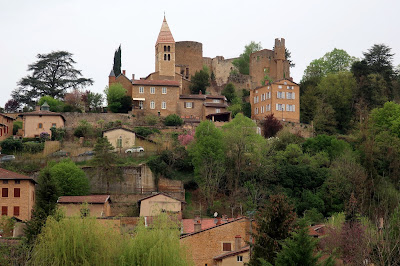Spring on the Prairies
Spring is almost here, with its fresh green shoots and blossoms. The first place to look is the land around us, but then we look backward into our cultural heritage and traditions with its wealth of spring festivals and religious traditions.
Wild Treats
For early Prairie dwellers, spring brought fresh treats after a long winter of dried food and staples. On the Prairies, wild onions were blooming, adding flavour to a diet that had become bland by winter’s end, while lamb’s quarters were an abundant source of raw and cooked greens.
In the northern forests, the birch trees were ready to be tapped for syrup, while the tender early spruce tips added a generous portion of Vitamin C to salads, stews or soups – not to mention spruce beer. A little later in the season there would be rose petals adding a delicate, perfumed flavour to jellies and baked goods.
Many of these wild foods can still be gathered and eaten in Saskatchewan. Prairie Infusions sells a wide variety of boreal forest food products. Look for fresh or dried mushrooms, wild fiddleheads, birch leaf tea, and pine pollen at SaskMade Marketplace.
Dandelion greens and lamb’s quarters are easy to find in urban areas. If you pick rose petals, be sure to leave the stamens and pistils behind so that there will be rosehips later in the season.
Two Yukon women have compiled cookbooks and plant profiles that provide a wealth of resource material. They are:
Cultural Heritage
Persians celebrate Norouz, the new year, on the first day of spring. Basmati rice pilaf with fresh herbs and rosewater-scented pudding are two traditional Norouz dishes.
Ukrainian Easter bread, or paska, is a rich, slightly sweet egg bread. Some of the dough is reserved and shaped into decorations – braiding, crosses, etc.
A similar treat in British culture is hot cross buns.
Jewish families serve a ritual Seder meal to celebrate Passover. It includes unleavened Matzoh bread, bitter herbs, egg as a symbol of life, as well as a number of other dishes.
Easter Eggs
Decorated eggs represent fertility and new life in both the Persian and Ukrainian cultures.
Homemade dyes are an excellent way to combine new and old Easter traditions. In most cases, you chop or grate fruits and vegetables, add water to cover, and one tablespoon of vinegar as a fixative. Boil for 15 minutes, then submerge your hard-boiled eggs. The longer they sit in the dye, the more vibrant the colour.
Every dye will give different results. Try red cabbage (purple), blueberries (blue), spinach or matcha powder (green), carrots, onions or turmeric (yellow/orange), and beets, cranberries, raspberries or red zinger tea (red).
Did you know?
Credits: This article was originally published in the March 2013 edition of the SaskMade Marketplace newsletter
Photo credit: Andrew McKinlay
Wild Treats
For early Prairie dwellers, spring brought fresh treats after a long winter of dried food and staples. On the Prairies, wild onions were blooming, adding flavour to a diet that had become bland by winter’s end, while lamb’s quarters were an abundant source of raw and cooked greens.
In the northern forests, the birch trees were ready to be tapped for syrup, while the tender early spruce tips added a generous portion of Vitamin C to salads, stews or soups – not to mention spruce beer. A little later in the season there would be rose petals adding a delicate, perfumed flavour to jellies and baked goods.
Many of these wild foods can still be gathered and eaten in Saskatchewan. Prairie Infusions sells a wide variety of boreal forest food products. Look for fresh or dried mushrooms, wild fiddleheads, birch leaf tea, and pine pollen at SaskMade Marketplace.
Dandelion greens and lamb’s quarters are easy to find in urban areas. If you pick rose petals, be sure to leave the stamens and pistils behind so that there will be rosehips later in the season.
Two Yukon women have compiled cookbooks and plant profiles that provide a wealth of resource material. They are:
- The Boreal Herbal: Wild Food and Medicine Plants of the North by Beverley Gray
- The Boreal Gourmet: Adventures in Northern Cooking by Michele Genest
Cultural Heritage
Persians celebrate Norouz, the new year, on the first day of spring. Basmati rice pilaf with fresh herbs and rosewater-scented pudding are two traditional Norouz dishes.
Ukrainian Easter bread, or paska, is a rich, slightly sweet egg bread. Some of the dough is reserved and shaped into decorations – braiding, crosses, etc.
A similar treat in British culture is hot cross buns.
Jewish families serve a ritual Seder meal to celebrate Passover. It includes unleavened Matzoh bread, bitter herbs, egg as a symbol of life, as well as a number of other dishes.
Easter Eggs
Decorated eggs represent fertility and new life in both the Persian and Ukrainian cultures.
Homemade dyes are an excellent way to combine new and old Easter traditions. In most cases, you chop or grate fruits and vegetables, add water to cover, and one tablespoon of vinegar as a fixative. Boil for 15 minutes, then submerge your hard-boiled eggs. The longer they sit in the dye, the more vibrant the colour.
Every dye will give different results. Try red cabbage (purple), blueberries (blue), spinach or matcha powder (green), carrots, onions or turmeric (yellow/orange), and beets, cranberries, raspberries or red zinger tea (red).
Did you know?
- Decorated eggs are a Persian and Ukrainian tradition
- Birch syrup is a savoury addition to salad dressings or marinades
- Captain Meriwether Clark, an early European explorer, once gathered half a bushel of wild onions for the camp’s supper
Credits: This article was originally published in the March 2013 edition of the SaskMade Marketplace newsletter
Photo credit: Andrew McKinlay






Comments